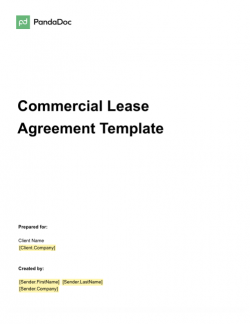New York Commercial Lease Agreement
A New York Commercial Lease Agreement is a legal document that allows a tenant to rent a space for retail, office, or industrial purposes. This contract outlines the responsibilities and privileges of both the landlord and the tenant, including details about due dates, rent payments, penalties, and other specifics. Ensure you adhere to state laws with our legally binding New York Commercial Lease Agreement template.

Compliance With Local Zoning Laws and Regulations
New York zoning boards establish laws, often working with city councils or planning commissions. These laws segregate commercial and industrial zones, enhancing property values and fostering economic growth.
New York commercial zoning rules govern various aspects of business operations, such as:
- Building aesthetics, size, height, setback, and landscaping can be regulated.
- Signage, including height, type, street appearance, and font, must meet specific standards. Signs in strip malls usually need to be uniform.
- Noise and occupancy limits must be adhered to, particularly for businesses like bars or nightclubs.
- Businesses must comply with consumer protection requirements.
- New York zoning laws evolve with changing business and community needs. Non-compliant companies may receive a permit, or variance, to continue operations under certain conditions.
Before leasing a new building, business owners should verify compliance with New York zoning laws using zoning maps available online or at county planning offices or zoning boards.
Tenant’s Responsibilities for Compliance With Environmental Laws
A New York lease for commercial or industrial use should include more than just a clause stating “compliance with all existing laws.” Landlords might want to consider incorporating the following tenant responsibilities:
- A clause that obliges the tenant to cover the landlord’s cleanup expenses;
- A clause that clarifies the environmental terms used in the lease;
- A clause that lists the laws the tenant must adhere to, including “all other environmental laws” without exception;
- A clause that bans the production, storage, disposal, transport, and usage of hazardous substances on the property;
- A clause that preserves the landlord’s right to enter the property for inspections;
- A clause that mandates immediate reporting of any communication from environmental authorities;
- A clause that requires the tenant to return a “clean” facility;
- A clause that restricts the tenant’s ability to file claims against the landlord.
In addition, New York landlords should enhance their leasing practices by:
- Examining the tenant’s planned operations;
- Assessing a potential tenant’s financial records;
- Utilizing the right of entry for regular inspections;
- Contemplating environmental inspections before and after the lease;
- Mandating that the tenant carry insurance.
Required Notice Periods for Rent Increases or Lease Termination
- New York is renowned for their rent control laws that limit landlords from raising rents above specified thresholds. These regulations frequently encompass terms for permissible yearly hikes, vacancy management, and protections against eviction without valid reasons.
- When terminating a lease, refer to the signed commercial lease agreement, which usually outlines termination procedures.
Disclosure of Environmental Hazards and Contamination
Even though it seems impossible for a landlord to transfer all responsibility to a tenant using the third-party defense, CERCLA permits the evaluation of equitable (or “fairness”) factors when settling contribution claims from landlords against tenants.
In determining liability, a court may take into account the “Gore” factors (named after former Congressman Al Gore), which encompass:
- The ability of the parties to show that their contribution to the discharge, release, or disposal of hazardous waste is identifiable
- The quantity of hazardous waste implicated
- The toxicity level of the hazardous waste
- The extent of the parties’ participation in the creation, transport, treatment, storage, or disposal of hazardous waste
- The level of caution exercised by the parties regarding hazardous waste issues, considering the properties of such dangerous waste
- The extent of the parties’ collaboration with federal, state, or local officials to avert damage to public health or the environment.

